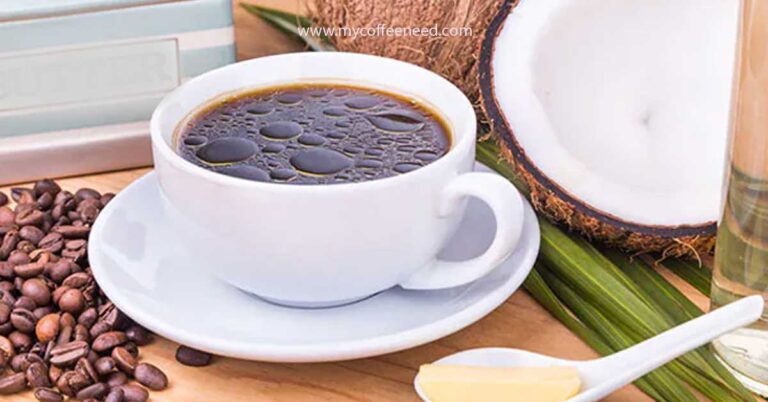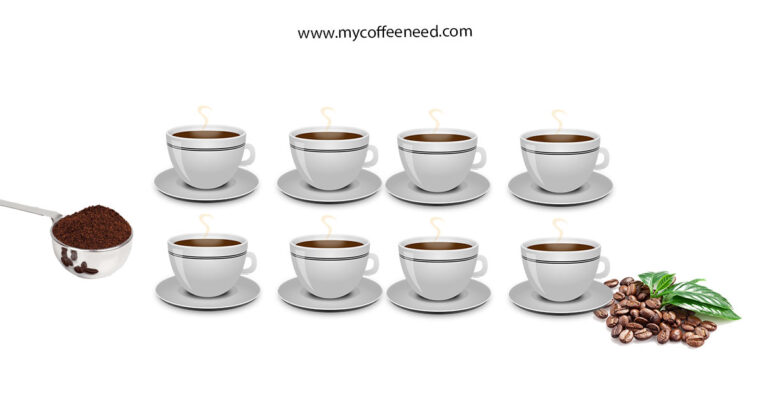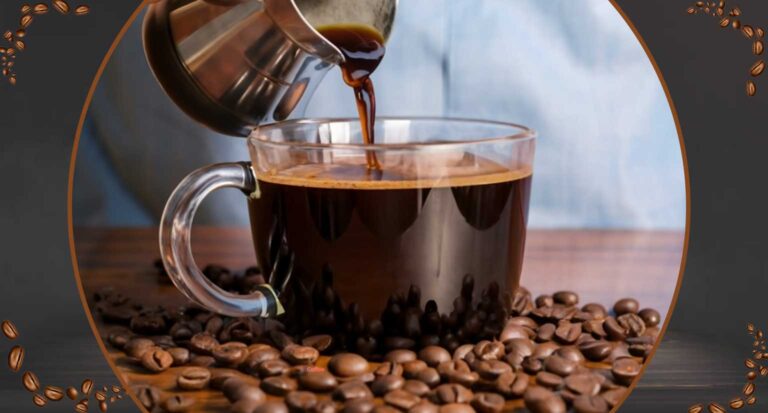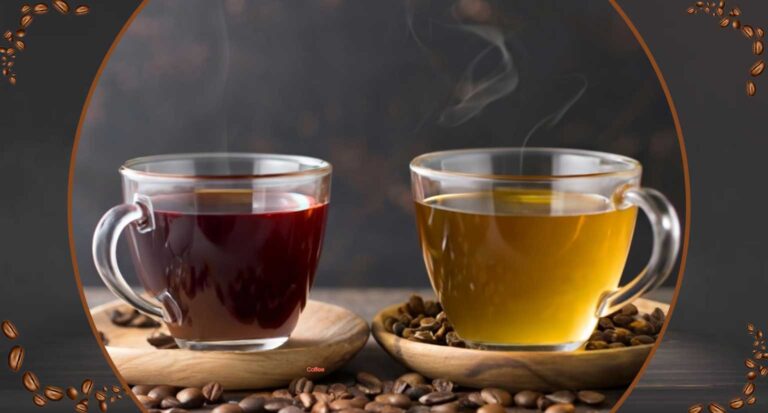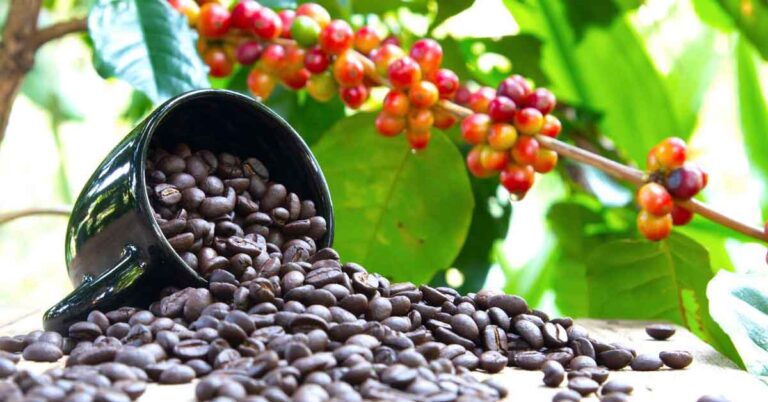How Many Scoops of Coffee Per Cup?
When it comes to brewing the perfect cup of coffee, getting the right measurements is key. One common question that arises is, “How many scoops of coffee per cup should I use per cup?”
While the answer can vary depending on personal preferences and the type of coffee beans used, there are general guidelines to follow to ensure a balanced and flavorful brew.
This section will delve into the specifics of coffee measurements by the scoop, helping you to achieve the perfect cup every time.
Knowing How Much Coffee to Use
An ideal coffee-to-water ratio is essential for brewing a perfect cup of coffee. A commonly recommended starting point is to use 1 to 2 tablespoons of ground coffee per six ounces of water.
However, the exact ratio can be adjusted to personal preference. If you prefer a bolder, stronger cup, use more coffee. If you prefer a lighter, smoother cup, use less.
Always remember, the quality of coffee you use will significantly impact the flavor. Therefore, while measuring, consider the quality and roast level of your beans as well.
What’s the Right Amount of Grounds for Your Cup Size
Determining the Ideal Coffee Grounds for Your Cup Size
The right amount of coffee grounds for your cup size can be subjective, as it largely depends on how strong you like your coffee.
As a general guideline, for a standard 8-ounce cup, you would typically use about 2 tablespoons (approximately 10 grams) of coffee grounds.
However, if you have a larger cup or mug, say 12 ounces, you might want to increase that to 3 tablespoons (approximately 15 grams).
For those who prefer a stronger brew, you may want to add an extra half or whole tablespoon to these measures. Conversely, if you prefer a milder coffee drink, subtract a half or whole tablespoon.
Just remember, the optimal measurement is all about your personal taste and the type of coffee you use. Always adjust according to your preference and enjoy your perfect cup of coffee.
Calculating Caffeine Levels
Understanding Caffeine Levels in Your Coffee
Calculating the caffeine content in your coffee can be quite complex as it depends on several factors. These include the type of coffee bean, the roast level, the brewing method and the serving size.
Generally, a standard 8-ounce (240-milliliter) cup of brewed coffee contains about 95 milligrams of caffeine. However, this amount can range between 30 and 200 milligrams, depending on the factors mentioned earlier.
For instance, darker roasts often have less caffeine than lighter ones, despite their stronger flavor. Similarly, brew methods like French press or espresso tend to extract more caffeine than drip or pour-over methods.
Moreover, the type of coffee bean used also influences the caffeine content, with Robusta beans containing almost twice the amount of caffeine as Arabica beans.
Keep in mind that these values are approximations, and the actual caffeine content of your coffee may vary. Nevertheless, by understanding these factors, you can make informed decisions about your caffeine intake.
Learn How to Adjust Your Brew for a Maximum Energy Boost
Adjusting Your Brew for Maximum Energy Boost
To maximize the energy boost from your coffee, there are several factors to consider. Primarily, you could opt for coffee beans with a higher caffeine content such as Robusta.
Despite its slightly bitter taste, Robusta has almost double the caffeine of Arabica beans, thus providing a stronger energy kick.
In terms of brewing methods, those that involve longer contact time between the water and coffee grounds, such as French press or espresso, tend to extract more caffeine. Hence, if you need an extra energy lift, these methods are a good choice.
Also, consider brewing your coffee with a higher coffee-to-water ratio. More coffee grounds per cup mean more caffeine, which in turn translates to a greater energy boost. However, this might result in a stronger taste that may require an adjustment period.
Lastly, drinking your coffee black without any additives like milk or sugar can ensure you get an unbuffered caffeine hit.
Keep in mind that while these methods will increase the caffeine content, they may also heighten coffee’s potential side effects. Always adjust your coffee habits according to your health and tolerance levels.
Exploring Different Types of Grinds
Exploring Different Types of Grinds
The grind of your coffee can greatly affect the overall flavor and strength of your brew. There are several types of grinds, each suited to a particular brewing method.
- Coarse grind: This type of grind is chunky, similar to coarse sea salt. It is ideal for brewing methods that require a long steeping time, such as French press or cold brew.
- Medium grind: A medium grind has a consistency similar to beach sand. It is suitable for most drip coffee makers.
- Fine grind: Fine grind is smoother to the touch, somewhat like table salt. It is commonly used for espresso or Moka pots.
- Extra fine grind: This grind is even finer and is used for Turkish coffee.
The right grind can make a big difference to your cup. If the coffee tastes too bitter, it might be too fine a grind. If it tastes too weak or sour, the grind might be too coarse.
Always remember to grind your coffee just before brewing for the freshest taste, and experiment with different grind levels to discover what works best for you.
Selecting the Right Beans
Choosing the right coffee beans is a crucial step in brewing your perfect cup of coffee. The flavor, aroma, and strength of your coffee are largely determined by the type of beans you choose.
- Arabica beans: Known for their sweet, delicate flavor and smoothness, Arabica beans are considered to be superior in quality. They are ideal if you prefer a light, nuanced cup of coffee.
- Robusta beans: These beans pack a punch with their strong, robust taste. They contain more caffeine than Arabica beans, making them perfect for those who prefer a hearty, full-bodied cup.
- Single-origin beans: These beans come from a single location and are known for their distinctive flavor profile. They allow you to savor the unique characteristics of coffee from different regions around the world.
- Blend: A blend combines beans from different regions. It offers a balanced flavor, aroma, and body. Blends are great if you’re looking for a consistent flavor.
- Light, Medium, and Dark Roasts: The roast level of the bean can significantly impact the flavor of the coffee. Light roasts are more acidic and carry original bean flavors, while dark roasts are less acidic, have a bitter taste, and tend to have flavors from the roasting process itself.
As you explore the world of coffee beans, remember that the ‘right’ beans come down to personal preference. Don’t be afraid to experiment with different types of beans and roasts to discover which ones make your perfect cup of coffee.
Experimenting with Brewing Methods
Experimenting with different brewing methods can be an exciting venture for coffee enthusiasts. Different methods can lead to variations in taste, strength, and texture, helping you find the one that suits your palate the best.
- Pour-Over/Drip: This is one of the most straightforward and common methods. It allows you to control the speed and coverage of water, resulting in a clean and robust flavor.
- French Press: This method requires coffee grounds and hot water to steep together for a few minutes before the brew is separated by pressing down a mesh plunger. It results in a full-bodied and richly flavored coffee.
- Espresso: High-pressure brewing method extracts a concentrated, intense shot of coffee with a layer of crema on top. It serves as the base for many coffee drinks like cappuccino, latte, and macchiato.
- Cold Brew: As the name suggests, this method involves steeping coffee grounds in cold water for an extended period (usually 12 to 24 hours). The result is a smooth, sweet, and low-acidity coffee perfect for warm weather.
- Aeropress: A relatively new method, it uses air pressure to force water through the coffee grounds, resulting in a cup of coffee that is somewhere between a French press and an espresso in terms of taste and strength.
Each brewing method requires a specific grind size and brewing time to bring out the best flavors. Don’t rush the process – take your time to experiment with different methods, bean types, and grinds to find your perfect brew.


